Project Medieval
Award-winning exhibition designers Nissen Richards Studio, who have previously worked on the Wallace Collection exhibitions Forgotten Masters: Indian Painting for the East India Company, An Enquiring Mind: Manolo Blahník at the Wallace Collection, and Henry Moore: The Helmet Heads, have once more collaborated with the Wallace Collection on two new installations to showcase highlights from the Collection – an exceptionally-rare full set of medieval armour, one of only three in the world, and the works of Jean-Henri Riesener, France’s most important cabinetmaker during the reign of Louis XVI.
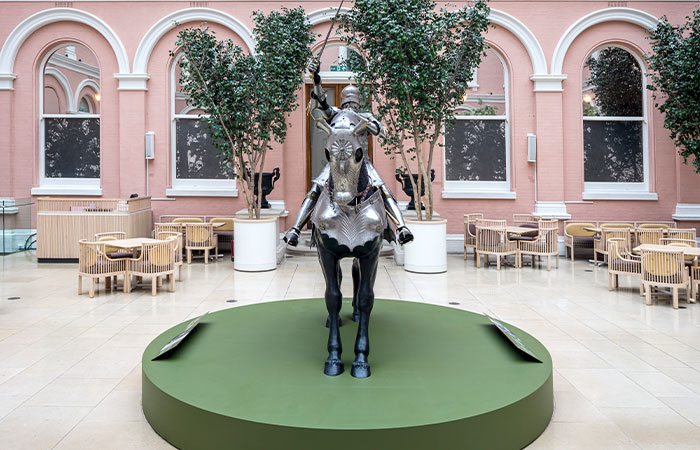
“What’s fascinating about these new collaborations”, Pippa Nissen, Director of Nissen Richards Studio commented, “is that they demonstrate the nimble thinking and responsiveness of the Wallace Collection to this highly-challenging year through the display of objects and artefacts in the form of temporary spotlight installations to refresh an existing collection.”
Dr Xavier Bray, Director of the Wallace Collection, said:
“Like many organisations, 2020 has been very difficult for the Wallace Collection, and together with our colleagues across the sector, we’re seeing that we need to give audiences a specific reason to come back to visit.”
Until the nineteenth century, the fifteenth-century equestrian armour was preserved in the ancestral home of the Freyberg family at Schloss Hohenaschau in Bavaria. Around 1850 the contents of this formidable mountain fortress were sold at auction, and the armour was acquired in 1867 by the Comte de Nieuwerkerke, who displayed it in his apartment at the Louvre in Paris. In 1871 the armour was sold to Sir Richard Wallace, along with the rest of the Nieuwerkerke collection. Now, for the first time in over 100 years, the armour will be redisplayed for a limited time at the centre of the building’s courtyard café, beneath the glass-roofed central atrium. The new display sees the knight-and-horse armour set on a bespoke green circular plinth, complementing the greenery of the courtyard area, with information graphics highlighting key moments in its history including a photograph of its former home in the Louvre, and new graphics on the windows to set the scene of encountering the armour within a wood or forest.

Dr Tobias Capwell, Curator of Arms and Armour at the Wallace Collection, and Project Lead on the Equestrian Armour Redisplay said:
“This armour is a world-famous image of the medieval European knight. Over the last 150 years, it has inspired artists, served as a standard illustration in encyclopaedias and history books, and thrilled generations of visitors to Hertford House. Only three full equestrian armours made before the sixteenth century survive in the world today, and this is the only one preserved complete, as originally made. It was meant to be seen in the open, in natural light, and for the first time in living memory, our visitors will be able to see it that way too.”
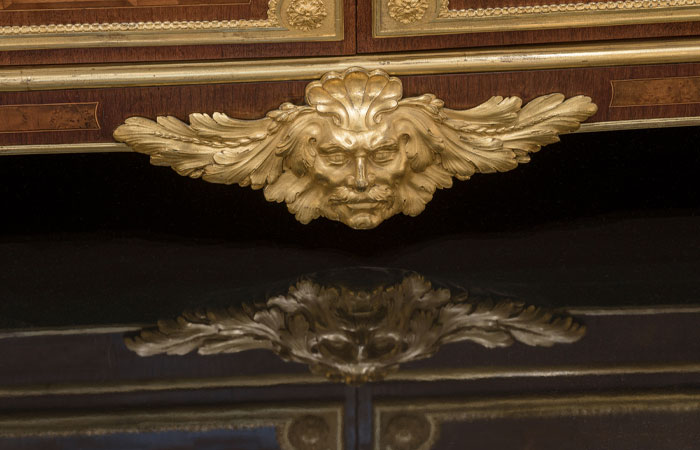
In a second, concurrent collaboration, Nissen Richards Studio worked with the Wallace Collection to celebrate the life and work of French cabinetmaker Jean-Henri Riesener, exhibiting Riesener’s furniture in East Gallery I, East Gallery II and the Great Gallery as part of The Riesener Season. The furniture is displayed on a series of high-gloss black plinths with timber-finish sides that give a contemporary, reflecting edge to the works, positioned down the centre of the rooms, both as a way to spotlight the pieces from every angle and to provide social distance and subtle circulation guidance during the pandemic.
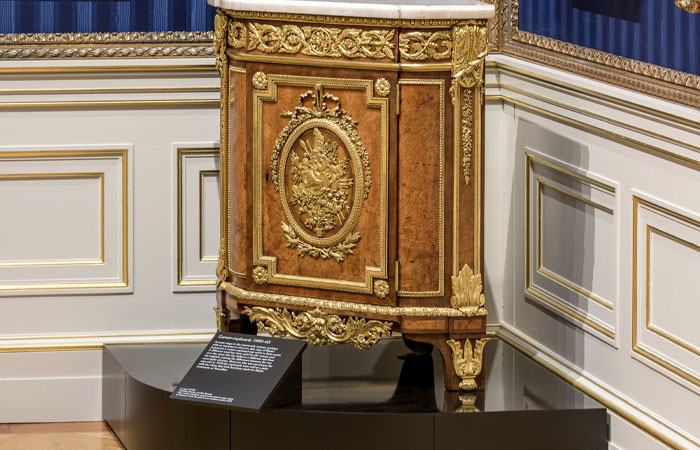
The Riesener Season also features an accompanying digital trail, a fascinating new book about the cabinetmaker, a dedicated microsite exploring the life and work of the artist, and a series of free online public events. The season is the culmination of a five-year research project led by the Wallace Collection, in partnership with Royal Collection Trust and Waddesdon Manor, who each hold highly important pieces by Riesener in their collections, put together by George IV and Ferdinand and Alice de Rothschild respectively.
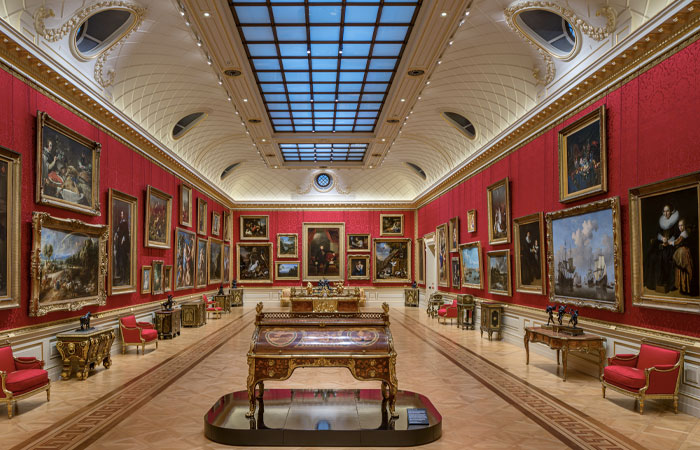
Jean-Henri Riesener (1734-1806) was the most important cabinetmaker in France during Louis XVI’s reign. From humble beginnings as a German emigrant, he found work in Paris and went on to become the most successful cabinetmaker of his generation. His work was renowned for its floral and figurative marquetry and spectacular gilt-bronze mounts and he was appointed cabinetmaker to Louis XVI in 1774. He was Marie-Antoinette’s favourite cabinetmaker, providing furniture for her private apartments in several royal palaces. In the nineteenth century, his name became synonymous with craftsmanship and luxury, and all that was admired in French furniture. The Riesener furniture in the Wallace Collection is some of the most important in the world. It is also the single largest holding of furniture that once belonged to Marie-Antoinette outside France.
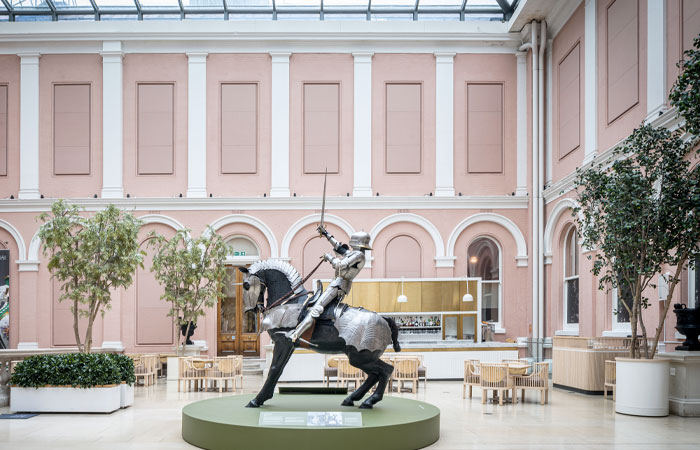
Jürgen Huber, Senior Furniture Conservator at the Wallace Collection, said:
“I am so pleased to see the two Roll-top desks in the Great Gallery where these impressive pieces are shown in a complete different setting. Furthermore, having other Riesener Masterpieces displayed as never before gives a unique 360 degree access, allowing the visitor to appreciate aspects of Riesener’s technical ingenuity.”
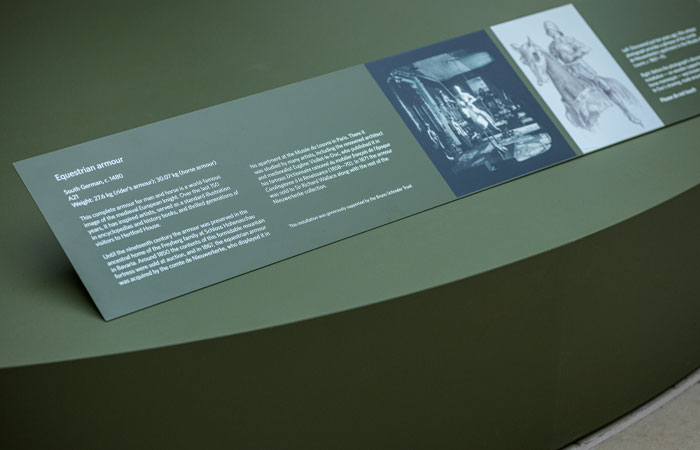
Contact Nissen Richards Studio.




